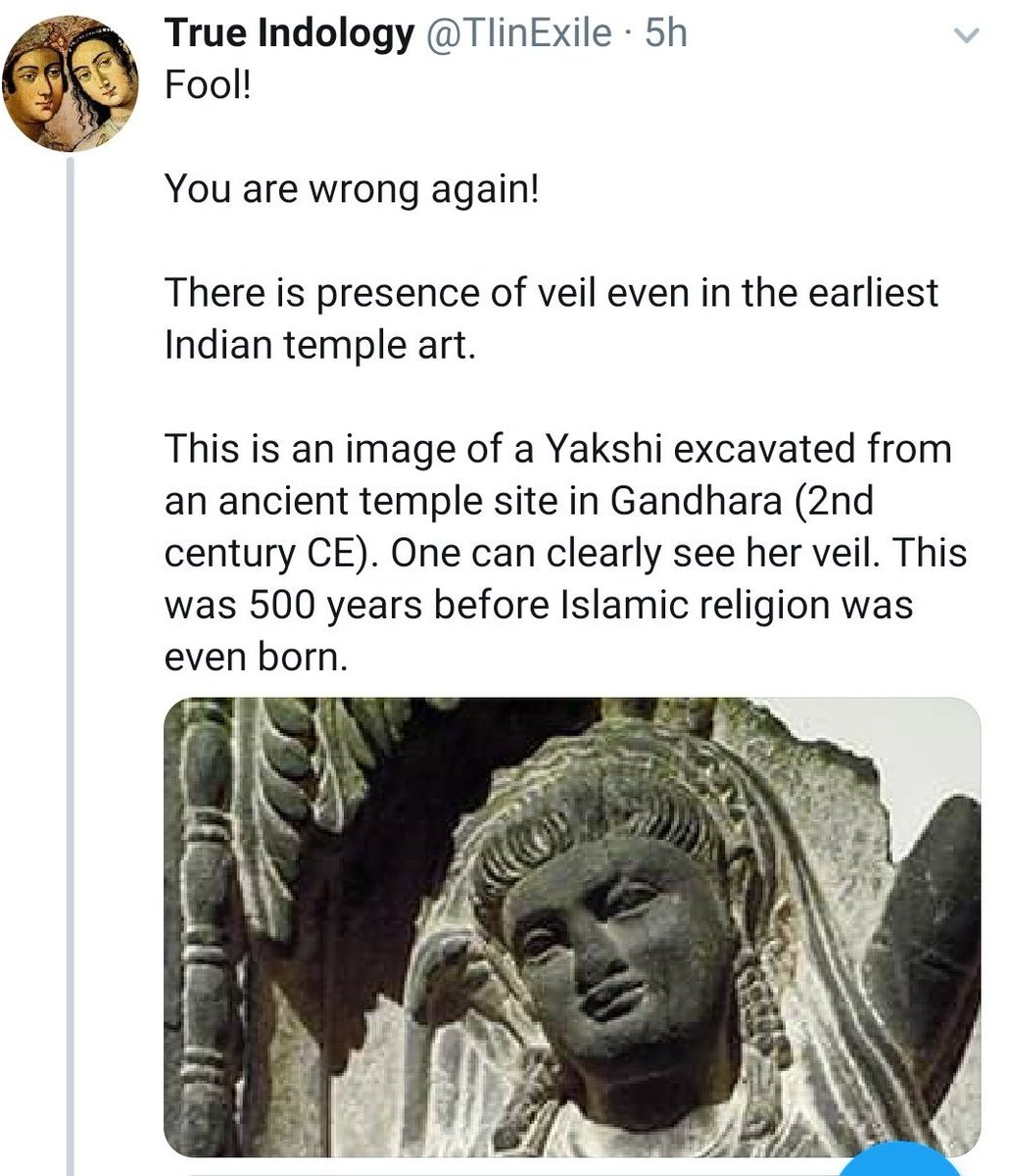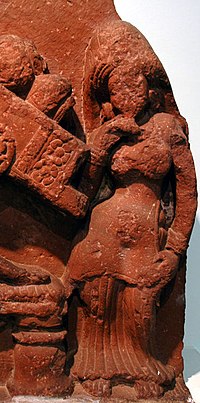Much Propganda is being spread in the name of Sanatan Dharma. All such Propganda is spread by Raitas only, to satisfy their Masters, and to present a full liberal, Degenerate and a false image of Hinduism.
One such topic which was started today was the topic of Ghoonghat.
One such topic which was started today was the topic of Ghoonghat.
Ofcourse your average raita will fully cancel this topic. But I& #39;m writing this thread to educate fellow Hindus, who actually want to be Traditional and not Apologetic.
Ghoonghat, also known as & #39;ghunghat, ghunghta, ghumta, orhni, laaj, chunari& #39; is a Traditional veil, that Hindu women wear, which covers their head, as well as their face.
The word ghoongat, ghunghat or ghunghta is derived from Avagunthana (Sanskrit: अवगुण्ठन)
The word ghoongat, ghunghat or ghunghta is derived from Avagunthana (Sanskrit: अवगुण्ठन)
meaning veil, hiding and cloak and Oguntheti (Pali: ओगुन्थेति) to cover, veil over. Your average Raita will say that this practice is not part of Hinduism, and came.during Islamic times. But that& #39;s completely wrong.
Let& #39;s see some ancient works which talk about Ghoonghat practice
Let& #39;s see some ancient works which talk about Ghoonghat practice
1) Valmiki Ramayan, Yuddha Kand, 111 Sarg, 61-62 Shloka says-
Gita Press Translation-
दृष्ट्वा न खल्वभिक्रुद्धो मामिहानवगुण्ठिताम् ||
निर्गतां नगरद्वारात्पद्भ्यामेवागतां प्रभो |
Translation-
Gita Press Translation-
दृष्ट्वा न खल्वभिक्रुद्धो मामिहानवगुण्ठिताम् ||
निर्गतां नगरद्वारात्पद्भ्यामेवागतां प्रभो |
Translation-
& #39;प्रभो! आज मेरे मुँहपर घूँघट नहीं है। मैं नगर-द्वारसे पैदल ही चलकर यहाँ आयी हूँ। इस दशामें मुझे देखकर आप क्रोध क्यों नहीं करते हैं ?& #39; (61)
पश्येष्टदार दारांस्ते भ्रष्टलज्जावगुण्ठनान् ॥
बहिर्निष्पतितान् सर्वान् कथं दृष्ट्वा न कुप्यसि
पश्येष्टदार दारांस्ते भ्रष्टलज्जावगुण्ठनान् ॥
बहिर्निष्पतितान् सर्वान् कथं दृष्ट्वा न कुप्यसि
& #39;& #39;आप अपनी स्त्रियोंसे बड़ा प्रेम करते थे। आज आपकी सभी स्त्रियाँ लाज छोड़कर घूंघट हटाकर बाहर निकल आयी हैं। इन्हें देखकर आपको क्रोध क्यों नहीं होता ?& #39; (62)
Note-
Note-
These are the Gita Press translation. If you read from http://valmikiramayana.net"> http://valmikiramayana.net , the Shlokas will be 63-64 (Number changes in different editions, but content remains same)
Also, the English translation would translate Ghoonghat as & #39;Veil& #39;.
Also, the English translation would translate Ghoonghat as & #39;Veil& #39;.
2) In the post-Gupta period, Śūdraka, the author of Mṛcchakatika set in the fifth century AD, mentions that some females wore a thin head-veil (avagunthana) to conceal and beautify their coiffures.
Śūdraka notes that a married woman was expected to put on a veil while In public.
Śūdraka notes that a married woman was expected to put on a veil while In public.
In Mṛcchakatika, courtesan Vasantasena& #39;s mother, having received ornaments for her daughter from a wealthy suitor to keep her as his mistress, she sends Vasantasena with her maid, asks her to go in the carriage bedecked with ornaments and to put on her avagunthana veil.
At the end of the play when Vasanthasena is legally wedded, she receives the title "Vadhūśabda" meaning "title of a bride" simultaneously with the veil "vasantasenām avagunthya" meaning "a token of honorable marriage
3) In Abhijñānaśākuntalam by Kālidāsa, written between the 3rd and 4th century CE, when the heroine (Shakuntala) arrives at King Duhsanta& #39;s palace, seeking to take up her wifely status, the king first remarks "Kā svid avagunthanavati" meaning "who is this veiled one?"
and immediately forbears to look at her, with the words "Anirvarnaniyam parakalatram" meaning "The wife of another is not to be inspected."
Scriptures present long before Islam was even born, mention Hindu Traditional women wearing "Ghoonghat". Hence, you can clearly understand that blaming this practice on the Islamic Invaders is utterly foolish.
Now, the question arises why South Indian Women don& #39;t wear it?
The answer is simple- Their Ghoonghat Tradition is lost.
Their women do not wear Ghoonghat that frequently anymore. The reasons might be lack of discipline, and the hot-humid climate.
The answer is simple- Their Ghoonghat Tradition is lost.
Their women do not wear Ghoonghat that frequently anymore. The reasons might be lack of discipline, and the hot-humid climate.
It is a fact, that some regions do not follow their Traditions anymore.
For example like i stated, Ghoonghat Tradition in south is lacking, whereas Upnayana of V1,V2,V3 on the correct time, lacks in Northern India.
For example like i stated, Ghoonghat Tradition in south is lacking, whereas Upnayana of V1,V2,V3 on the correct time, lacks in Northern India.
Now, for those fools who seem to rely on Statues and sculptures to prove their liberal thoughts, and say that there are many sculptures who don& #39;t portray woman wearing a veil, hence this practice is fake.
For those people, kindly see the next 2 images.
For those people, kindly see the next 2 images.
This concludes my thread.
For more information, you all can refer to this: https://twitter.com/vajrayudha11/status/762114807692537856?s=19">https://twitter.com/vajrayudh...
For more information, you all can refer to this: https://twitter.com/vajrayudha11/status/762114807692537856?s=19">https://twitter.com/vajrayudh...

 Read on Twitter
Read on Twitter



